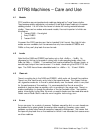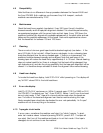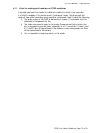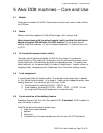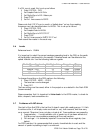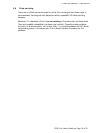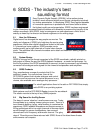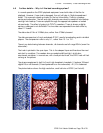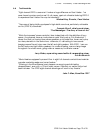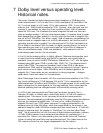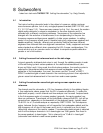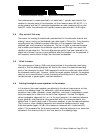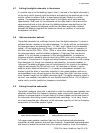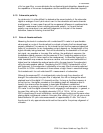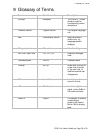
8 Subwoofer s
SDDS Print Master Guidelines, Page 23 of 26
8.7
Setting t he digit al subwoofer in the cinema.
In a s i milar way as on the dubbing s tage i n Step 3, the l evel of the digi tal subwoofer is
set by using a mul t i - channel real time analys er and adj us ti ng the electrical gain of the
monitor system to achieve 10dB of in-band acoustical gain, relative to a s cr een
speaker. The cons equence of this adjustment is that signals which were r ecor ded
appr ox i matel y 10dB lower for the s ubwoofer will now play back in the cinema at the
same acous ti cal level as they did when the dubbi ng engineer recorded them on the
dubbi ng s tage, because the pl ayback conditions have been acoustically matched
between the dubbi ng s tage and the ci nema ( as closely as variations in rooms and
loudspeakers will allow).
8.8
Optical subwoof er defined.
T he opti cal subwoofer has a di fferent function than the digi tal subwoofer . It serves to
enhance the bass response of the opti cal playback. It is totally artificial, synthesized in
the ci nema pr ocessor by combining the L , C ( -3dB), and R signals from the decoded
optical Lt,Rt and s endi ng the s um through a l ow pass filter. The cut off frequency of
this filter may be 50Hz, 80Hz, 100Hz, 120Hz or some other frequency, depending on
the ci nema pr ocessor and the i ns taller’s judgement. A hi gh pass filter may also be
applied, if it is not already a component of the opti cal preamplifier, to r educe l ow
frequency artefacts caused by ground noi s e ti mi ng (GNR) errors and s tr eaki ng nois e
on the pr i nt. The end r es ul t is a s i gnal containing fr equency components which overlap
those being s ent to, though not necessarily reproduced by, the s cr een speakers. In
Hollywood, the dubbi ng engineer may not have listened to this signal on the dubbing
stage (i n part because the DS 4 without a cat . 160 card does not create it) and s o
made no ar ti s tic deci s i on s based on it. It is merely an enhancement created i n the
cinema t o give the effect of more bass extension in the s cr een speakers and has no
correspondence to any discrete s i gnal on the dub s tage. Note that it also has a much
lower dynamic r ange than the di gital subwoofer signal. The digi tal subwoofer signal, in
contrast, was creatively recorded on its own discrete channel (Sub or LFE) of the pr i nt
master and i s used for specific l ow fr equency sound effects.
8.9
Setting t he opt ical subwoof er .
T he opti cal (analogue) subwoofer is adjusted to match the opti cal screen speakers and
effectively extend thei r low fr equency response, again using a mul t i - channel real time
analyser to compar e bands in the pass band of a s cr een speaker and the pass band of
the s ubwoofer , and s etting in-band acoustical levels accor d i ng l y . In this case, there i s
no in-band acous ti cal gain difference, as the s ubwoofer signal is just the l ow fr equency
components of the s cr een speaker signals.
40
63
100
160
250
400
630
1K
1.6K
2.5K
4K
6.3K
10K
16K
Center channel loudspeaker response
40
63
100
160
250
400
630
1K
1.6K
2.5K
4K
6.3K
10K
16K
Analog subwoofer channel response
Same SPL
Full range s cr een speakers need l ess help fr om the s ynthes i zed opti cal subwoofer
signal than do older speakers with poor bass extension. Experienced ci nema engi neer s
may chose to r educe the nomi nal level of the opti cal subwoofer, lower the fr equency



